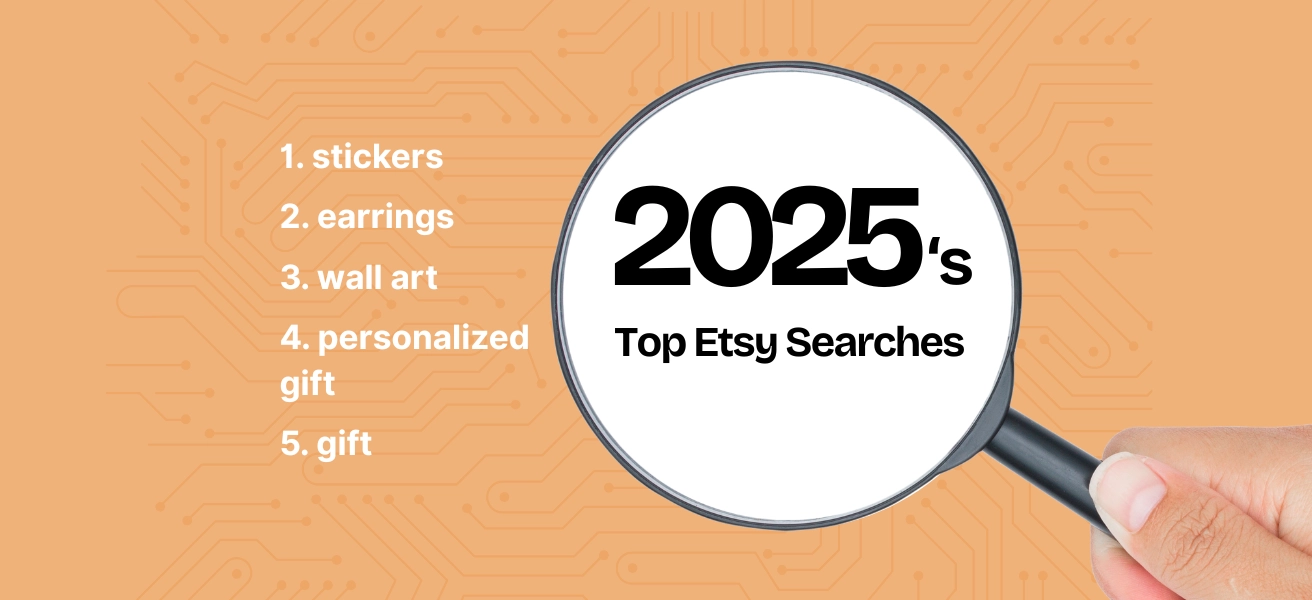Updated January 6, 2026
Reading time: 8 minutes
What can you do today to make sure that 2021 is going to be your best-ever year of sales on Etsy? My name is Pam Duthie and I’m both an Etsy seller myself and have been an Etsy coach for five years. I’m committed to getting the highest-quality information and sharing with you how to grow your shop using the most up-to-date and expert-tested tips and tricks.
So, how did your 2020 Christmas selling season go? Did you make lots of sales? Did you do better than previous years? Or was it not so good?
Well, I had myself another great Christmas season and I wanted to share with you what I do early in the year, every year, to capitalize on all that information I’ve got floating around so that I can make the next year’s sales even better.
Before we begin though let me say that I know it’s easy to feel disheartened just now. The volume of buyers peaks each year around November. So things are trailing off now. And for those of you who had a good Christmas, those highs are dropping away by now. January often retains a bit of momentum with gift cards (and people coming to Etsy to buy themselves what they really wanted for Christmas). But especially for those of you who only got started this past autumn, it’s just not going to feel like it did. And this is normal! Don’t be discouraged. This is what happens every year. Retail hasn’t got a steadily-upward trajectory. It’s going to have peaks and troughs, and we’ve got to figure out what we can do during the quieter periods to ensure that we’re ready to pounce when things get busy again.
If you target holidays or seasons with your tags – e.g., winter, Christmas, or Valentine’s Day – this is the ideal time to shift your focus to what’s at least six weeks to two months ahead, such as Mother’s Day, graduations, summer.
But for most of us, we do not want to be freaking out about any current dearth of sales and begin ditching our top keywords in our top listings just because they’re not doing what they were doing in November! Our winning listings and our winning keywords are probably still winning listings and winning keywords. It’s just that there’s fewer people buying just now.
What we do want to do right now is identify what those winning keywords were, and also find some new ones that show potential. And the very first place I look for that is in my shop’s Etsy stats.
Using Etsy Search Stats to Find Tags
You get here from your Shop Manager dashboard by clicking the little bar graph icon (that’s the stats icon) from the side menu on the left.

It’s important to choose an adequate length of time here. You want to see the results for thousands of views, not just dozens or hundreds of views. So use the date button’s drop-down menu to change the time period you’re looking at. Make it long enough to yield a good amount of data.

I selected the “Custom” option (the last one on the drop-down menu) to get a calendar from which to choose my dates. In this case I chose four months of data, from October 10, 2020 to February 10, 2021.

TIP: If you’re not getting high views at the moment, it’s difficult to get enough data to have statistically-significant results. So, take it from an old Etsy U instructor: it’s really important that you don’t waste your time checking on daily or weekly stats during slow times!
But even with a new or slow shop, you can still do this once-a-year procedure that I’m going to show you here. Select “Etsy search” from your stats page:

Scroll down to your Search Terms. These are your most important keywords! These are keywords that buyers are already finding you for: they’re seeing you in search, and they’re clicking on your listings, so keep a list of these keywords!

If you have a paid eRank subscription, the Keyword Lists tool is the ideal way to build this. Just create a new list for your keyword winners:

Of course you can also do this with just pen and paper, but this is handier. With eRank’s Keyword Lists tool, you can save up to 2500 search terms, organize them, and see a good bit more data, all of which gets updated daily.
Once you’ve got this list made, you’re going to be able to check in August or September to make sure that you still have listings for these keywords and that you’re still ranking for them.
Note that what buyers search for and the keywords they use are most likely going to change over time. Nevertheless it’s crucial to take what worked last year and try it again this year just in case because buyer behavior for some things – say, Christmas tree ornaments – does change rather slowly if at all, and there are some evergreen search terms that might work for you for a number of years.
Using Etsy Ads Stats to Find Tags
If you use Etsy ads you can also look at your Etsy ads stats, and this way you can see the search terms for your best sellers. Frankly, this is one of the few good reasons I see for running Etsy ads. It does give you slightly better data.

Here when you click on any of the “Search terms” nested beneath each title, you can see for that listing some searched terms that have either a high click-through rate, indicating that a lot of people seeing your item in search have clicked on your listing rather than on those of other sellers (fantastic!). Or (even better), if you’re getting a lot of sales from a listing, you will see the exact searched term that has the highest buy-through rate.
And by the way, my advice is that when you’re looking at stats, don’t try to reconcile every different result from different search terms you find in different places. Don’t try to make everything add up down to the nearest single visitor. Rather, here you’re only looking for broad strokes – that is, a high-level overview; the “big picture.”
Using Search-Analytics Stats to Find Tags*
*Etsy is no longer offering this feature to sellers.
There’s another place to harvest keywords for your tags: Search analytics. On your Shop Manager dashboard’s left side menu, click the megaphone icon (that’s the Marketing icon) and then from the slide-out menu, choose the top item on the list, Search analytics.
Click on the “Impressions” column header to sort your report by that column, and you will get an idea of the search terms that lots of shoppers are using to find your items. (“Impressions” indicate that people are searching, Etsy’s showing them a results page, and it has your listing on there, somewhere.) A high number of impressions tells you that there are lots of people searching for this.
And it’s even better if it’s got a high level of impressions and its ranking number is high.
(“What: what?! Why is that?” you might be asking.)
The reason is that a high ranking number – indicating that your listing doesn’t appear until after, say, 76 pages of search results – would mean lots of people are searching with this keyword, and you are being found. You’re just quite away down in the search. And therefore, if you were to make some tweaks, you could possibly rank nearer to the top of these search results, and then this keyword might become one of your superstar keywords for your titles and tags.
You’ve Found Some Good Keywords – Now What?
One tweak you could do is to create more listings focused around those keywords your listings are being found for. This would help your listings to gain more “authority” or relevance for that keyword in the eyes of Etsy’s algorithm.
And for the listings you already have – the ones which are showing up in search but with an abysmal rank? You can see what you can do to improve these listings to maybe bring them up in search rank. For instance, you could try improving your product photography, because a better thumbnail might get more shoppers to click, and that would tell Etsy your listing interests these shoppers. And so Etsy will push it up to appear sooner in search results – on page one or two, rather than on page 77.
A quick and easy fix is to make sure that an important keyword is in both your title and your tags. Another quick and easy way to improve your rank for an excellent keyword that you might try is to remove some of the other keywords from your title. That is, figure out which keywords are not garnering you any traffic, and remove those from your title. Get rid of what’s not doing anything for you. Etsy tells us that the more tightly targeted our titles are, the better.
If you don’t have an eRank subscription yet or you’re still on the Free plan, you can save these keywords in an Excel spreadsheet, or even in a notebook. Just don’t forget to check back in on them!
Hope this helps!
Pam Duthie









